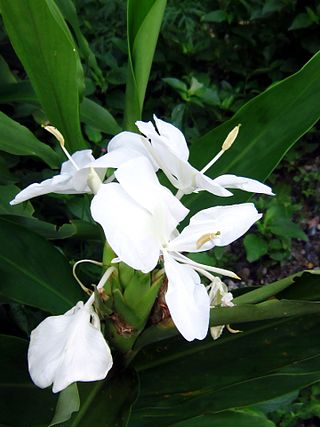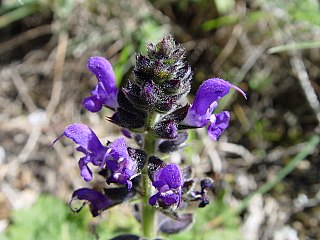
Rosa rugosa is a species of rose native to eastern Asia, in northeastern China, Japan, Korea and southeastern Siberia, where it grows on beach coasts, often on sand dunes. It is naturalized in much of Europe and parts of the United States and Canada. It should not be confused with Rosa multiflora, which is also known as "Japanese rose". The Latin word "rugosa" means "wrinkled", referring to the wrinkled leaves. Often used as an ornamental plant, it has become invasive in parts of Europe, North America and South America.

Rubus phoenicolasius is an Asian species of raspberry in the rose family, native to China, Japan, and Korea.

Physalis angulata is an erect herbaceous annual plant belonging to the nightshade family Solanaceae. Its leaves are dark green and roughly oval, often with tooth shapes around the edge. The flowers are five-sided and pale yellow; the yellow-orange fruits are borne inside a balloon-like calyx. The exact native range is uncertain. The species may be naturally endemic to Australia or the Americas or the native range may encompass both the Americas and Australia. It is now widely distributed and naturalized in tropical and subtropical regions worldwide.

Hedychium coronarium, the white garland-lily or white ginger lily, is a perennial flowering plant in the ginger family Zingiberaceae, native to the forest understorey of Asia.

Sonchus asper, the prickly sow-thistle, rough milk thistle, spiny sowthistle, sharp-fringed sow thistle, or spiny-leaved sow thistle, is a widespread flowering plant in the tribe Cichorieae within the family Asteraceae.

Thunbergia alata, commonly called black-eyed Susan vine, is a herbaceous perennial climbing plant species in the family Acanthaceae. It is native to Eastern Africa, and has been naturalized in other parts of the world.

Euonymus fortunei, the spindle, Fortune's spindle, winter creeper or wintercreeper, is a species of flowering plant in the family Celastraceae, native to east Asia, including China, Korea, the Philippines and Japan. E. fortunei is highly invasive and damaging in the United States, causing the death of trees and forest in urban areas.

Plumeria rubra is a deciduous plant species belonging to the genus Plumeria. Originally native to Mexico, Central America, Colombia and Venezuela, it has been widely cultivated in subtropical and tropical climates worldwide and is a popular garden and park plant, as well as being used in temples and cemeteries. It grows as a spreading tree to 7–8 m (23–26 ft) high and wide, and is flushed with fragrant flowers of shades of pink, white and yellow over the summer and autumn.

Salvia verbenaca, also known as wild clary or wild sage, is native to the British Isles, the Mediterranean region in Southern Europe, North Africa, and Near East, and in the Caucasus. It can be found as an introduced species that has naturalized in many parts of the world, including the Eastern United States, California, Mexico, Argentina, Uruguay, Southern Africa, Tasmania, New Zealand and China.

Spermacoce or false buttonweed is a genus of flowering plants in the family Rubiaceae. It comprises about 275 species found throughout the tropics and subtropics. Its highest diversity is found in the Americas, followed by Africa, Australia and Asia. It can be used for the treatment on Eczema by rubbing the leaves on the affected part.

Cyperus difformis is a species of sedge known by several common names, including variable flatsedge, smallflower umbrella-sedge and rice sedge. This plant is native to southern Europe, most of Africa and Asia, and Australia, and it is naturalized in other areas of the world, including large parts of the Americas.

Dendrobium nobile, commonly known as the noble dendrobium, is a member of the family Orchidaceae. Dendrobium nobile is one of the most widespread ornamental members of the orchid family. It is the state flower of Sikkim.

Lipocarpha is a genus of sedges known as halfchaff sedges. There are approximately 35 species and representatives can be found throughout the tropical and warmer temperate areas of Africa, Asia, Australia, North America, South America and various oceanic islands. These mostly are erect annual herbs growing 1 to 30 centimeters tall. The inflorescence consists of one to few spikes each containing many spirally arranged spikelets. The flower is entangled with two hyalin scales, a spikelet prophyll and a glume. These flower stands in the axil of a spikelet-bract.

Rorippa palustris, marsh yellow-cress, bog yellow-cress or common yellow-cress, is a species of flowering plant in the family Brassicaceae. It is widespread and native to parts of Africa, and much of Asia, Europe and Eurasia, North America and the Caribbean. It can also be found in other parts of the world as an introduced species and a common weed, for example, in Australia and South America. It is an adaptable plant which grows in many types of damp, wet, and aquatic habitat. It may be an annual, biennial, or perennial plant, and is variable in appearance as well.

Zanthoxylum armatum, also called winged prickly ash or rattan pepper in English, is a species of plant in the family Rutaceae. It is an aromatic, deciduous, spiny shrub growing to 3.5 metres (11 ft) in height, endemic from Pakistan across to Southeast Asia and up to Korea and Japan. It is one of the sources of the spice Sichuan pepper, and also used in folk medicine, essential oil production and as an ornamental garden plant.

Limnocharis flava is a species of aquatic flowering plant which is native to Mexico, Central America, South America, Cuba, Haiti and the Dominican Republic but widely naturalized in southern and southeastern Asia: India, Sri Lanka, Cambodia, Burma, Thailand, Vietnam, Indonesia, Malaysia, Brunei and southern China.

Dioscorea pentaphylla is a species of flowering plant in the yam family known by the common name fiveleaf yam. It is native to southern and eastern Asia as well as New Guinea, Sri Lanka and northern Australia. It is widely cultivated as a food crop and naturalized in Cuba and on several island chains in the Pacific.

Gnaphalium polycaulon, the many stem cudweed, is a plant species in the family Asteraceae. It is widespread across much of Mesoamerica, South America, and the West Indies, and naturalized in parts of Asia and Africa.

Phyllanthus tenellus is a herbaceous plant in the leafflower family, Phyllanthaceae. It is commonly called Mascarene Island leaf flower as it is native to the Mascarene Islands. It is often a weed in flower beds, gardens, roadsides, and other disturbed areas.

Plantago indica, commonly known as branched plantain, sand plantain, or black psyllium, is a flowering plant in the plantain family Plantaginaceae, and is one of a few species in the Plantago genus under the common name psyllium. The plant is native to parts of Africa, Europe, Russia, and Asia, and has been naturalized in many other areas such as Australia and North America. The plant can be found mostly in dry inland areas, such as those that are sandy, and has also naturalized on roadsides and in meadows. The plant is not used broadly as a food source, but has been cultivated for its seeds which serve a medicinal use as a laxative.
![Tharthaval (Malayalam trrutaav[?]) (31450654622).jpg](http://upload.wikimedia.org/wikipedia/commons/thumb/c/c2/Tharthaval_%28Malayalam_%E0%B4%A4%E0%B4%B1%E0%B5%81%E0%B4%A4%E0%B4%BE%E0%B4%B5%E0%B5%BD%29_%2831450654622%29.jpg/220px-Tharthaval_%28Malayalam_%E0%B4%A4%E0%B4%B1%E0%B5%81%E0%B4%A4%E0%B4%BE%E0%B4%B5%E0%B5%BD%29_%2831450654622%29.jpg)



















